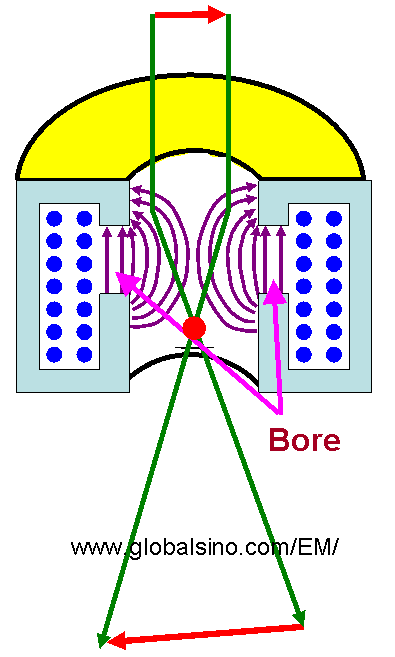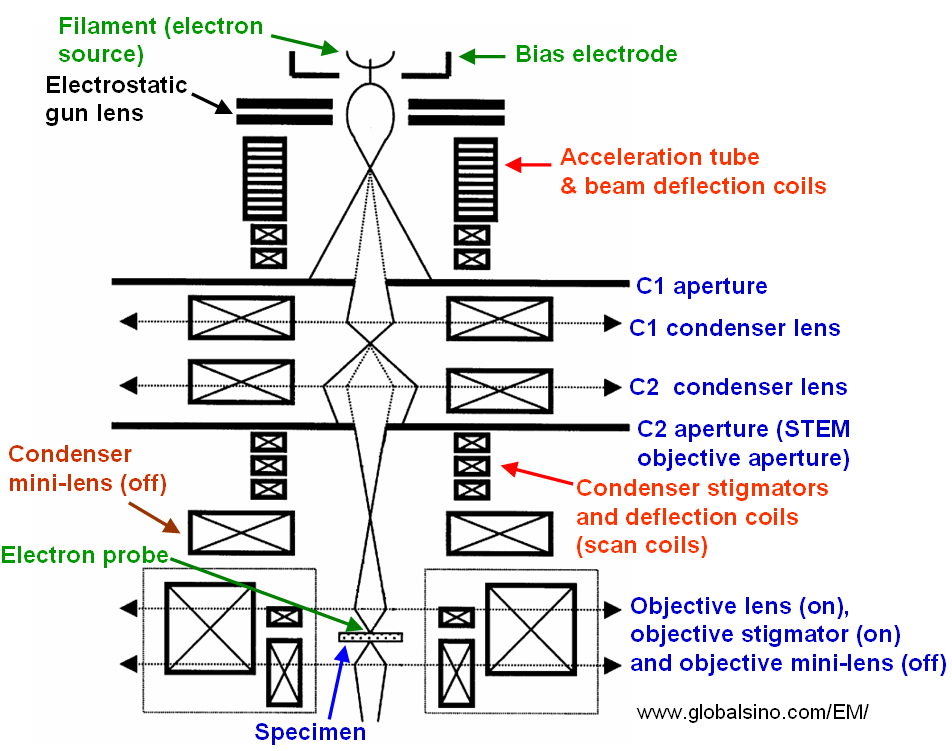=================================================================================
The rotationally symmetric magnetic field is inhomogeneous in such a way that it is strong close to the bore as shown in Figure 4328a and becomes weak in the centre of the optical axis. Therefore, the electrons close to the centre are less strongly deflected than those passing the lens far from the centre. The overall magnetic effect is that the parallel electrons in the beam are focused into a cross-over shown by the red solid spot.

Figure 4328a. Rotationally symmetric magnetic fields and electron lenses.
Figure 4328b shows the structure of the electron probe-forming system in STEM mode in JEOL JEM-2010F TEMs. A cross-over is formed between the two condenser lenses (C1 and C2) by employing near-maximum excitation in the C1 lens, resulting in a large source de-magnification.

Figure 4328b. Schematic illustration of the probe-forming electron optics in STEM mode in JEOL JEM-2010F TEMs.
|

